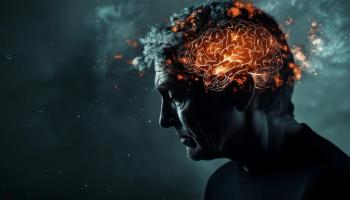
- Psychiatric Times Vol 13 No 5
- Volume 13
- Issue 5
Diagnosis and Treatment of Bipolar Disorder in Children and Adolescents
Since 1980, criteria for diagnosing bipolar disorder in adults have also been used to diagnose mania in children, with some modifications to adjust for age.
Since 1980,
In young children it is difficult to identify discrete episodes of mania or depression. The clinical presentation of childhood bipolar disorder is variable but includes a waxing and waning course, worsening disruptive behavior, moodiness, irritability, difficulty sleeping, impulsivity, hyperactivity and decreased concentration. Episodically they experience short attention span, low frustration tolerance, explosive anger followed by periods of guilt, depression and declining academic performance (Weller and colleagues).
In adults the lifetime prevalence for bipolar disorder, according to the Epidemiologic Catchment Area (ECA) survey, ranges from 0.6 percent to 1.1 percent (Robins and colleagues). An epidemiologic study of adolescents in the United States reported consistent prevalence rates. However, a significant number also reported experiencing a distinct period of abnormal, persistent, elevated, expansive or irritable mood, although they did not fulfill criteria for bipolar I, bipolar II or cyclothymia (Lewinsohn and colleagues). This corresponds with survey results of the membership of the National Depressive and Manic-Depressive Association (DMDA), which reported the onset of illness during childhood or adolescence in 59 percent of adult respondents (Lish and coworkers). At present, large-scale epidemiologic studies on prepubertal children are not available. However, studies have revealed descriptions of children and adolescents likely to develop the disorder.
Akiskal described the profile of a child at risk to develop bipolar illness as one who experienced emotions, whether they be positive or negative, passionately and intensely and whose mood and behavior was dysregulated and disinhibited. Predictors of bipolar outcome in adolescents with major depression have been identified as a family history of bipolar disorder, sudden onset of symptoms, delusions, psychomotor retardation and hypersomnia, pharmacologically induced hypomania/mania (Akiskal and coworkers; Strober and Carlson).
Medical and psychiatric conditions may mimic symptoms of bipolar disorder.
It is important to recognize that children with ADHD may also experience irritability or dysphoria due to demoralization and decreased self-esteem, making the differential diagnosis with bipolar disorder difficult. Furthermore, bipolar disorder may be superimposed on ADHD. In these cases one would expect to see an increase in the intensity or severity of symptoms.
Like bipolar disorder, conduct disorder frequently emerges during adolescence. These children usually engage in high-risk behaviors with the potential for painful consequences seen in mania. However, unlike the manic child, the conduct disorder child's motives are more hurtful, vindictive, antisocial. (Bowring and Kovacs; Weller and colleagues). Psychotic symptoms are also significant in determining diagnosis. These are not present in disruptive disorders, but may be present during an acute bipolar episode or with thought disorders.
Manic symptoms are recognized as a barometer of psychopathology severity in children and adolescents and have been correlated with greater psychosocial impairment. In addition to the daily interference in functioning and increased risk of suicide, long-term consequences of symptoms include interference with the mastery of developmental tasks such as regulating emotions, acquiring competencies, and establishing and maintaining social relationships (Nottelmann and Jensen). Respondents to the DMDA survey acknowledged the negative impact on their lives, reporting problems with crime, substance abuse, self-injurious behavior or aggression toward others, unstable relationships, gambling and financial difficulties and interruption in their education.
Thorough evaluation and treatment are essential. A biopsychosocial approach to intervention that incorporates psychoeducation and school intervention is warranted. Psychoeducation should incorporate child, adolescent and parent. They should be informed of symptoms of manic and depressive episodes and supported in the exploration and identification of symptoms of the index episode and of future symptoms indicative of a recurrence. The physician should discuss treatment options that include medication and psychotherapy.
While adolescents are treated with the same pharmacologic agents as adults, it appears that adolescents with bipolar disorder tend to have more mixed or rapid cycling presentations; these have been associated with poor response to lithium. Furthermore, questions remain regarding the efficacy of pharmacologic treatment and how long treatment should be maintained in the child and adolescent population. Advocates of long-term treatment acknowledge the serious consequences and course of illness; others favor discontinuing medication after the patient is stable, since the long-term effects of pharmacologic intervention remain unknown and noncompliant adolescents may contribute to their own refractoriness (Nottelmann and Jensen).
Double-blind, placebo-controlled studies are needed with lithium and other mood-stabilizing agents, carbamazepine (Tegretol) and valproate in order to assess their role in the treatment of children and adolescents with bipolar disorder. A multisite study funded by the NIMH is underway to investigate the effectiveness of prophylactic medication therapy in adolescents with bipolar disorder.
Psychotherapy has also been conceptualized as a prophylactic intervention with strategies seeking to improve interpersonal relationships and stress management. Stressful life events are viewed as potential precipitants for recurrent episodes. Therefore, the attempt of therapy is to reduce the number and severity of events. Attention is also given to routines, activities or substances that may disrupt one's normal schedule in attempts to enhance circadian integrity. These are important interventions, because it has been found that sleep deprivation (which can be self-induced in adolescents) may trigger a manic episode.
Collaboration with educators is invaluable, as teachers are able to provide objective observations comparing the child to their age peers. Working with educators can help promote strategies for intervening with depressed or manic children, and thereby help facilitate an environment that enhances learning.
The DMDA survey supports the stance that treatment of bipolar disorder can be enhanced by public health efforts that promote early diagnosis and treatment, ensuring adequate medication trials of mood-stabilizing agents for patients with frequent recurrent episodes, improving access to mental health services and expanding research efforts.
References:
References
1. Akiskal HS. Developmental pathways to bipolarity: Are juvenile-onset depressions pre-bipolar? J Am Acad Child Adolesc Psychiatry. 1995;34(6):754-763.
2. Akiskal HS, Walker P, Puzantian VR, et al. Bipolar outcomes in the course of depressive illness. J Affect Disord. 1983;5:115-128.
3. American Psychiatric Association. Diagnostic and Statistical Manual of Mental Disorders, 4th ed. Washington: American Psychiatric Association; 1994.
4. Bowring MA, Kovacs M. Difficulties in diagnosing manic disorders among children and adolescents. J Am Acad Child Adolesc Psychiatry. 1992;31(4): 611-614.
5. Carlson GA. Identifying prepubertal mania. J Am Acad Child Adolesc Psychiatry. 1995;34(6):750-753.6. Lewinsohn PM, Klein DN, Seeley JR. Bipolar disorders in a community sample of older adolescents: Prevalence, phenomenology, comorbidity, and course. J Am Acad Child Adolesc Psychiatry. 1995;34(4):454-463.
7. Lish JD, Dime-Meenan S, Whybrow PC, et al. The National Depressive and Manic-Depressive Association survey of bipolar members. J Affect Disord. 1994;31(4):281-294.
8. Nottelmann ED, Jensen PS. Bipolar affective disorder in children and adolescents. J Am Acad Child Adolesc. Psychiatry. 1995;34(6):705-708.
9. Robins LN, Helzer JE, Weissman M M, et al. Lifetime prevalence of specific psychiatric disorders in three sites. Arch Gen Psychiatry. 1984;41:949-958.
10. Strober M, Carlson GA. Bipolar illness in adolescents with major depression. Arch Gen Psychiatry. 1982;39:549-555.
11. Weller EB, Weller RA, Fristad MA. Bipolar diagnosis in children: misdiagnosis, underdiagnosis, and future directions. J Am Acad Child Adolesc Psychiatry. 1995;34(6):709-714.
Articles in this issue
over 29 years ago
Circadian Rhythms Factor in Rapid- Cycling Bipolar DisorderNewsletter
Receive trusted psychiatric news, expert analysis, and clinical insights — subscribe today to support your practice and your patients.











